First Starlog I See Tonight



The Dude has struck again, this time bringing us pictures and an article from the March issue of Starlog magazine -- which features a Wing Commander cover! Check it out, new pictures are at the bottom. Thanks, Dude, you rule!
Is it science fiction? Is it a war movie? Is it a CD-ROM game? Actually, Wing Commander is all three - a big-screen futuristic war film based on the bestselling series of computer games created by Chris Roberts. And fans of Wing Commander will be happy to know that the game is being brought to life for moviegoers by a director who thoroughly understands the source material - Roberts himself. The game designer-turned film director promises that Wing Commander will evoke classic war movies.Those space war games shift from computer to the big screen.
By Kim Howard Johnson"I wanted to have something that felt like Das Boot in space," says Roberts. "There were some scenes I wanted in the movie that were the equivalent of Das Boot's depth-charging scene. I was trying very much to make a classic World War II movie, but update it and set it in space, so things that you see will register with you on a subconscious level, but instead of destroyers at sea or a submarine stuck at the bottom of the ocean, it's all in space."
Many CD-ROM games cannot be effectively adapted to the big screen, but produce Todd Moyer says the cinematic elements of the Wing Commander game have made the transition much easier. The most ofmidable task they faced was in constructing a story out of the many hours of material in the game. "Our biggest challenge was trying to make the game into a cohesive, satisfying story that will work in two hours," says Moyer, "We don't have 20 hours to tell the story."Under Wing
Wing Commander focuses on Christopher Blair (Freddie Prinze Jr.), a pilot fresh out of the Academy who harbors a dark secret. Carrying an encoded message about a Kilrathi invasion, Blair, with his comrades Maniac (Matt Lillard), Deveraux (Saffron Burrows) and his commander, Paladin (Tcheky Karyo), join together as the Confederatino forces mobilize to defeat the alien forces.
Kevin Droney and Mike Finch wrote the screenplay, based on Roberts' instructions. "I had a rough outline of the kind of story I wanted to tell," says Roberts, "the feeling of the movie and the characters. I wanted to go back and tell the story of Blair and Maniac and their first tour of duty - which is more or less what happens in the first game, but the story's different and it's obviously more cinematically set."
Besides raising the Wing Commander bar, there were many new story elements that needed to be worked into the script, particularly in such a futuristic film. "One of the biggest problems with science fiction, especially where we jump from one area of space to another, is that there are many big concepts to get your mind around, and it's difficult to get that across," says Roberts, "We spent a fair amount of time trying to figure that out, while also retaining the human element. We have this group of young pilots, and I really wanted to feel the effect of the war on them and how the respond to it."
Roberts asserts that credit aside, his was a strong voice in screenplay development. "Like any movie nowadays, there's much more that goes into a story than just the accredited screenwriters' work. We had a couple of guys, for example, who came on and did the dialogue polish. I was heavily involved with the writing process at one point. When I sat down to rehearse with the actors, we would go in and work through scenes, and stuff that didn't seem right or natural to them, we would change it around or work it so they felt really comfortable with what their characters were saying."
Wing Commander's characters have argubaly made the game a success - something Roberts clearly wants to carry over into the film. "When Wing Commander first came out, I knew it was going to work when I went online and saw people talking about all the different Wingmen they were flying with," says Roberts. "They would say, 'Oh, Maniac is such a dick. I hate him, talking about them like regular people, rather than, 'Oh, you want to take this character because he's much better in this kind of mission.' They were talking about their personalities. I realized this connects with people, so in Wing Commander II, we took the storytelling aspect to another level and started playing with people's emotional responses. That improves from game to game, and also translated well across the big screen."
Although later Wing Commander games featured live-action footage, none of it was incorporated into the feature. In fact, with the exception of the storyline, the moviemakers completley ignored the CD-ROM games. "There are story elements of the games in the film," says Moyer, "and of course there are also Kilrathi, the aliens loosely based on a large cat, but from a design standpoint, everything is fresh," says the producer. "We didn't take any shots [from the CD-ROMs]. Because we're making a movie, we have a greater amount of time and can pay much more attention to detail. Of course, the visual effects have to be of much higher resolution. It's a whole different level of quality and attention to detail."
Moyer adds that there are some really terrific advantages in having Roberts, creator of the Wing Commander games, direct the film, but notes the importance of remembering the tremendous differences in the two media. "It's an advantage to have the same creative force behind the movie, and so we're trying to bring it up to a higher level. It's not that the video games aren't great, but its' the difference between having just 54 days to shoot a two hours film, as opposed to 35 days to shoot 20 hours' worth of live-action footage."Winging It
Principle photography took place in Luxembourg, where the unit constructed the flight deck and bridge of the Confederation carrier Tiger Claw, the bridge of the merchantman Diligent and the bridge of the alien Kilrathi capital ship. Luxembourg was an idael shooting locale, as it offered few disadvantages to shooting - and significant financial plusses. "Luxembourgh worked out fairly well. The only slightly challenging thing is that they don't have the same sort of infrastructure that London or LA has," says Roberts. "Many of our crew were from London. If we had to get equiptment, we would bring it in from Germany or London. But we were shooting becasue of tax rasons, and it helped with our production values."
Roberts' own company, Digital Anvil, is heavily involved with the Wing Commander FX. "Digital Anvil is doing all of the 3-D work, and this movie is entirely digital, whic means that we dno't have any practical models of spaceships or anything," says Roberts, "What we did in the case of the Rapiers, the fighters that the good guys fly, was build six full-size ones that we shot with over in Europe. We brought a digital artist out and he measured them and took photos and textured it, so it's basically a digital version of the real ones we had. We built physical models of all the ships and then we modeled them into digital form and used photographic reference for our textures. I think the digital models look quite close to the real ones.
"We really went out of our way to do everything digital in this movie, because there's stuff you can do digitally that you can't do with model photography in terms of moves that planes do, the number of elements in one shot, being right in the middle of an explosion or just feeling some of the action and dynamics. You're limited when you're using miniatures, because you wear this motion control rig, and your camera always has physical imitations of where you can put the lens and how close you can get to the model. We tried to push what was good about digital, which really lets you go anywhere you want and so we got some dogfighting and space battles that you haven't seen before in a movie."
The majority of the FX in Wing Commander invovle CGI, as well as green- and blue-screen shots. "There's a tremendous amount [of such work] in nearly every shot. And we have 300 shots" notes Moyer.
One of the most innovateive of these effectsis the Time Slice sequence, which involves a series of 60 cameras placed in a 120-arc around the subject, allowing the crew to take two seconds worth of footage moving around the action that's esentially frozen in space. Though a similar effect has been seen in TV commercials, it hasn't been succesfully utlized yet in a theatrical feature. "When I was in pre-production, you didn't see it everywhere, and I haven't seen it in features yet," says Roberts. "There was a bad attempt in Lost in Space, but that's very different from what we're doing."
"There are about three points in this movie where people go through jump points. In the Wing Commander Universe, you can't go faster than light. You go through faults in space called jump points, and as you go through a fault in space, everyone freezes in time, and so af the time we started pre-production, it seemed like a really grat effect. The sequence itself works quite well -- the closer they get to the jump, everything is shaky and it's all going to hell in a handbasket. Then as soon as they breach the jump, bam! It's like everyone is frozen and it's sort of serene."
Wing Commander features a variety of space-ships designed for the film, including the Rapier starfighters launched from the Tiger Claw, and other human and Kilrathi vessels. "My favorites are probably the Rapiers, just becasue I love the look of them. There's some cool stuff, and I hope audiences are impressed by it as well," says Roberts. "Peter Lamont and his art department did a lot of design work on the ships, and they came up with some great looks influenced by World War II stuff. These ships aren't your standard star destroyers!"
Roberts is fairly happy with the aliens, cat-like Kilrathi, although given a larger budget, he might have realized them in another way. "There are always problems dealing with people in suits. If I had my druthers - and a bigger budget - I probably would have done them digitally. But I didn't, and I thought Animated Extras did a really good job. There are inherent problems with putting somebody in a suit when a Kilrathi is 8 feet tall, so you have to build them up and move them aroudn the sets. It's always difficult to get a guy in a suit that tall to move as lively as a cat, which is where digital work comes in very nicely. But generally they look good. I wanted the Kilrathi to look scarier and meaner than they did in the games, where they were a little too cute. I wanted design elements that were evocative of a cat, but also pretty nasty and vicious."Stretching Wings
What about the human element of Wing Commander? Roberts believes Prinze was the perfect choice to play Blair. "We were looking for some young actors, and we were looking at the current crop. Obviously, Freddie's a good actor, but there was a nice cross of vulnerability, likeability and a slightly cocky edge. Plus, he's nto terribly bad-looking! He brings a nice empathy to the role. I think he's one of the more talented up-and-coming actors out there. You'll be seeing him over the next three or four years."
Roberts also has nothing but praise for the rest of his ensemble cast, a mixture ofyouth and experience. "The nice thing about doing this kind of movie is that it's an ensemble piece, with a group of young actors - including Burrows and Lillard - and some older character actors, like Jurgen Prochnow, David Suchet and David Warner - a nice, eclectic cast. And it was great that Fox was behind that, rather than telling us to cast a star here or there. In this kind of a movie, the story and the effects seem to be the major stars. Sometimes if you put a major star in there, he can get in the way of getting totally immersed in that universe - like seeing Ted Danson in Saving Private Ryan, Danson as Sam Malone from Cheers instead of as a Captain in the U.S. Airborne. But it depends on the role."
None of the CD-ROM game's cast members were employed in the film, in part to give the film its own identity, but also because most of the game's actors were simply too old, Roberts notes. "I felt like I was going to a different medium, so I wanted to start at the beginning," he says. "It's really like adapating a popular series of books. If you start with the third in the series, people say, 'I really don't know these characters. Where did they come from?' The movie goes back to the roots of Wing Commander I, where Maniac and Blair are in their early 20s and fresh out of the Academy. That's very different from Tom Wilson and Mark Hamill, who were playing charcters that came later in the games, who had already gone through 10 years of war. Just by the nature of the timeline and going back to the beginning, I really couldn't use the people that I had used in the games, because you're not going to buy Mark Hamill as a 20-year-old anymore. There was a certain amount of sadness involved in doing that, but if you're reaching out to a new audience, you need to start at the beginning."
The director did contact Malcolm McDowell about reprising his game role as Admiral Tolwyn, but scheduling difficulties prohibited his return. McDowell's Time After Time co-star, David Warner, plays the part instead.
"Because the Admiral was an older figure in the games, I felt like Malcolm could get away with it, but it unfortunatly didn't end up working out because he had a commitment to do Fantasy Island," says Roberts.In the Wings
Designer Peter (Titanic) Lamont helped add to Wing Commander's production values, "The one thing you get with somebody like Peter is: He has been a production designer for a logn time on many great movies, and he has this bank of knoweldge and ways to get things done. If you're a first or second time production designer, you just haven't been there. You're not able to say, 'This is how we did it on this film.' For the money we had, he did a spectacular job. He made it look so much bigger and expensive than he had a right to, especially having just come off Titanic, where he had a budget that was significantly bigger. He added a lot to the scale and scope of the prodution," Roberts says.
For his cinematographer, the director tapped Thierry Arbogast of The Fifth Element. "I've been a big fan of Thierry because I loved Luc Bsson's movies like La Femme Nikita and The Professional, and I wanted someone who was going to bebold and give me a colorful look," Roberts explains, "I wanted a look in this movie that would make it stand apart from other SF movies. Star Wars was very bright and '70s, Star Trek is sort of clean with clean lines while the aliens are dark and grungy, and ALIENS is dark and grungy. Iwanted to stay away from those three big science fiction franchises and give Wing Commander its own identity. We're seeing a lot of space on the Hubble Telescope photos, and since we're going with the World War II look and the submarine motif, I wanted a colorful look to the film."
Roberts gave costumer Magali Guidasci the same guidance he gave his other department heads, and was very impressed with the results. "It's the same kind of stuff I did with Peter," says Robsers. "I sat her down and said I wanted this retro feel. They're wearing their flight suits, but I almost wanted to feel like they're stepping out of their sptfire saying, "Tally-ho!" I like things that are more to do with texture and detail than 20 different swatches of color on a uniform. She went off and did some great designs."
According to Roberts, the disappointing box-office performance fo Starship Troopers is unlikely to have a negative effect on Wing Commander. "We're not a huge, high-profile $100 million movie," says Roberts. "This movie doesn't have to do $200 million at the box office to be a hit. There's a strong audience of SF fans that go to see space warfare films, and if it's decent science fiction, then you're going to do quite well. And it's not like it's a huge risk or famble - if Wing Commander does $50 million at the box office, it will probably be considered a success. Obviously, I would have liked Starship Troopers to have done more business because I could have said, 'Hey, people go and see science fiction no matter what!'"
The director is excited about Wing Commander but admits he is a perfectionist. "I think it's pretty good, but my problem is, I'm sitting here at this stage of editing where I want everything to be perfect, and no matter what the budget is, it's not going to be 100 percent perfect," says Roberts. "There's always going to be one shot missing or something. Next time around, I would love to have more money because I could do a better job. But I think the stuff that's done at this moment is going to impress people."
He wouldn't mind helming a second Wing Commander film, though he "would like to direct something else first. But yeah, I love movies," Chris Roberts says, "and it's a totally new medium for me to play around with. Nobody in movies knows who I am, so that's fun - I'm a sort of scrappy little kid trying something, which at one point in the games business I used to be, but I'm not anymore. I love being able to put audiences in movie seats for two hours and take 'em to another place and time!"











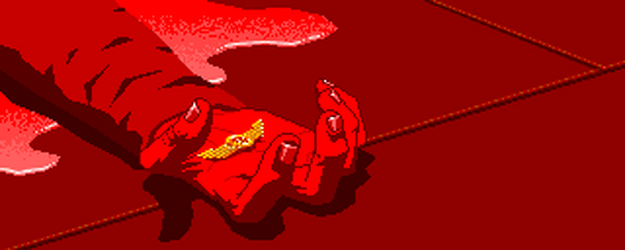

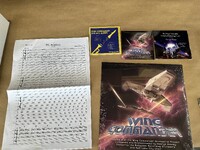

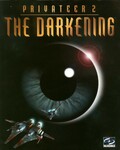
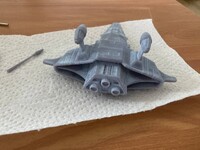
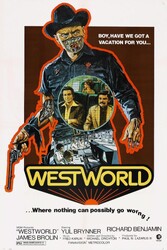
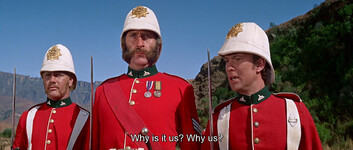

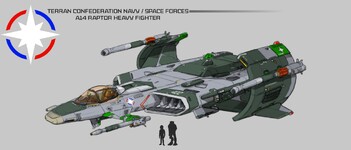
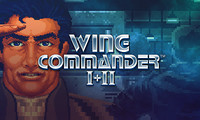



Follow or Contact Us